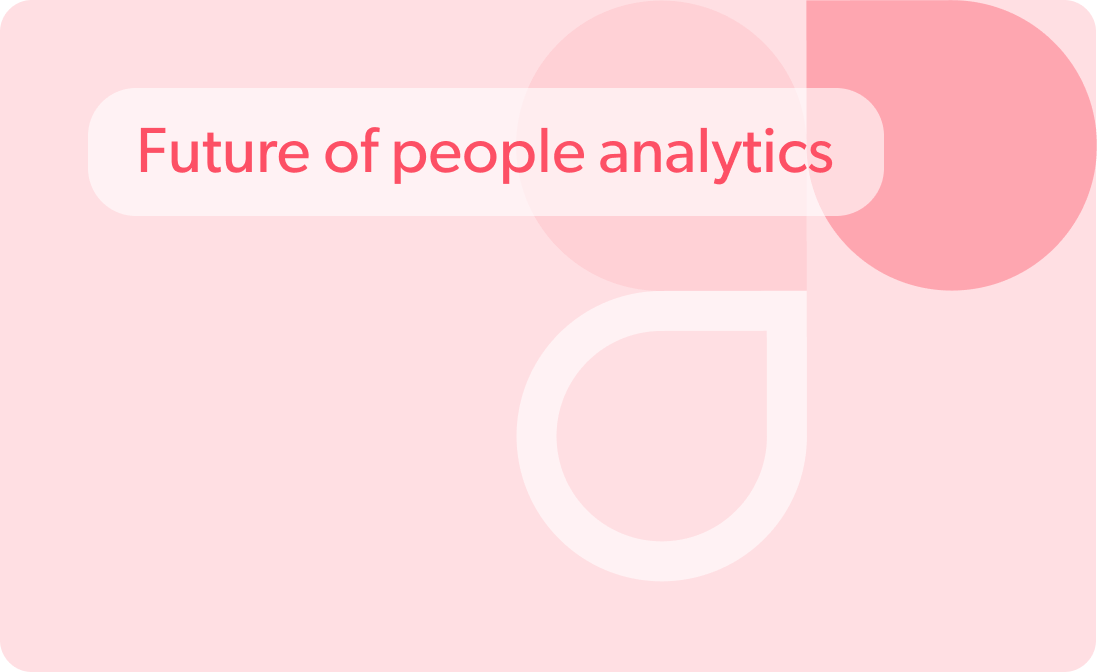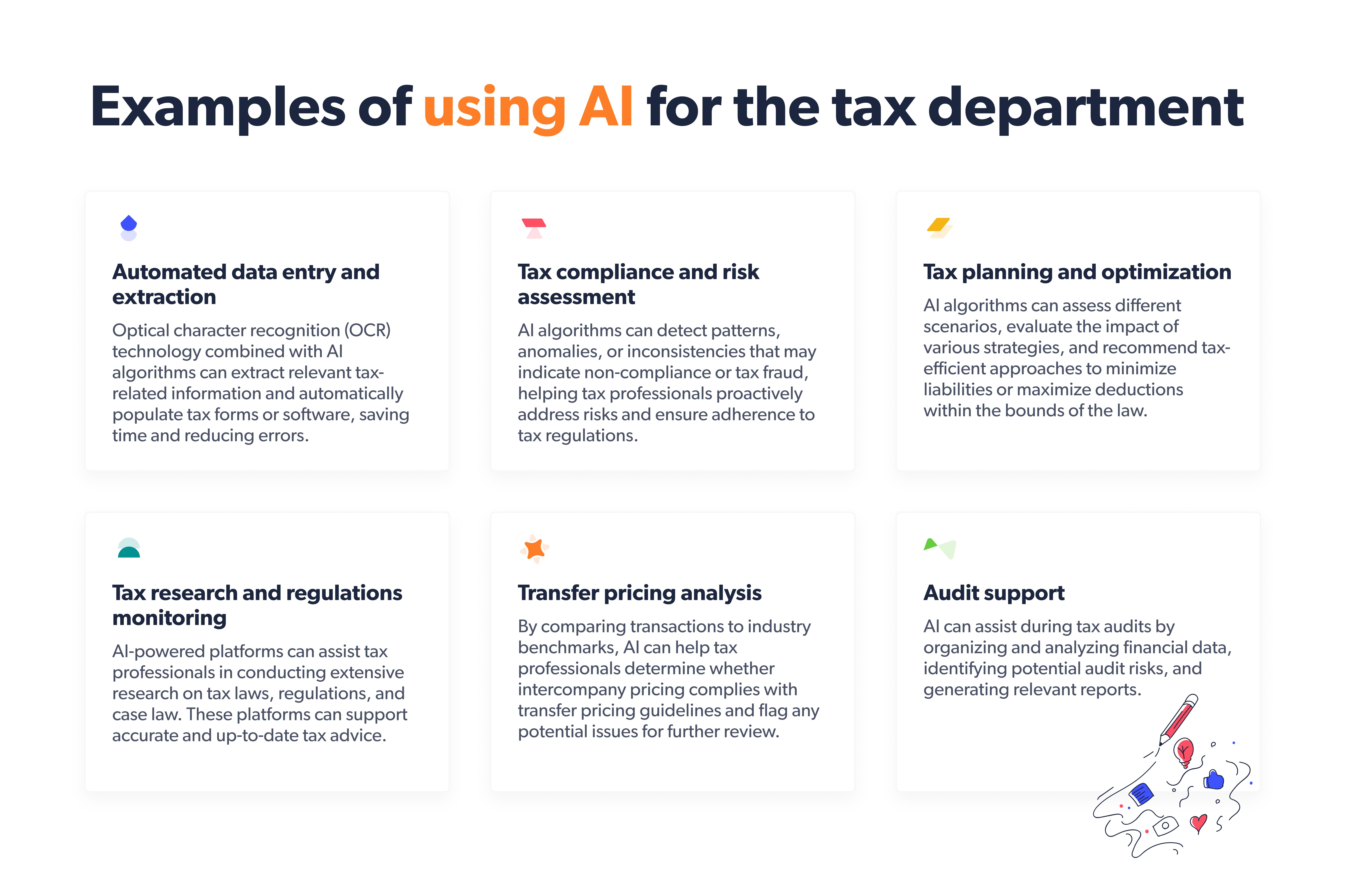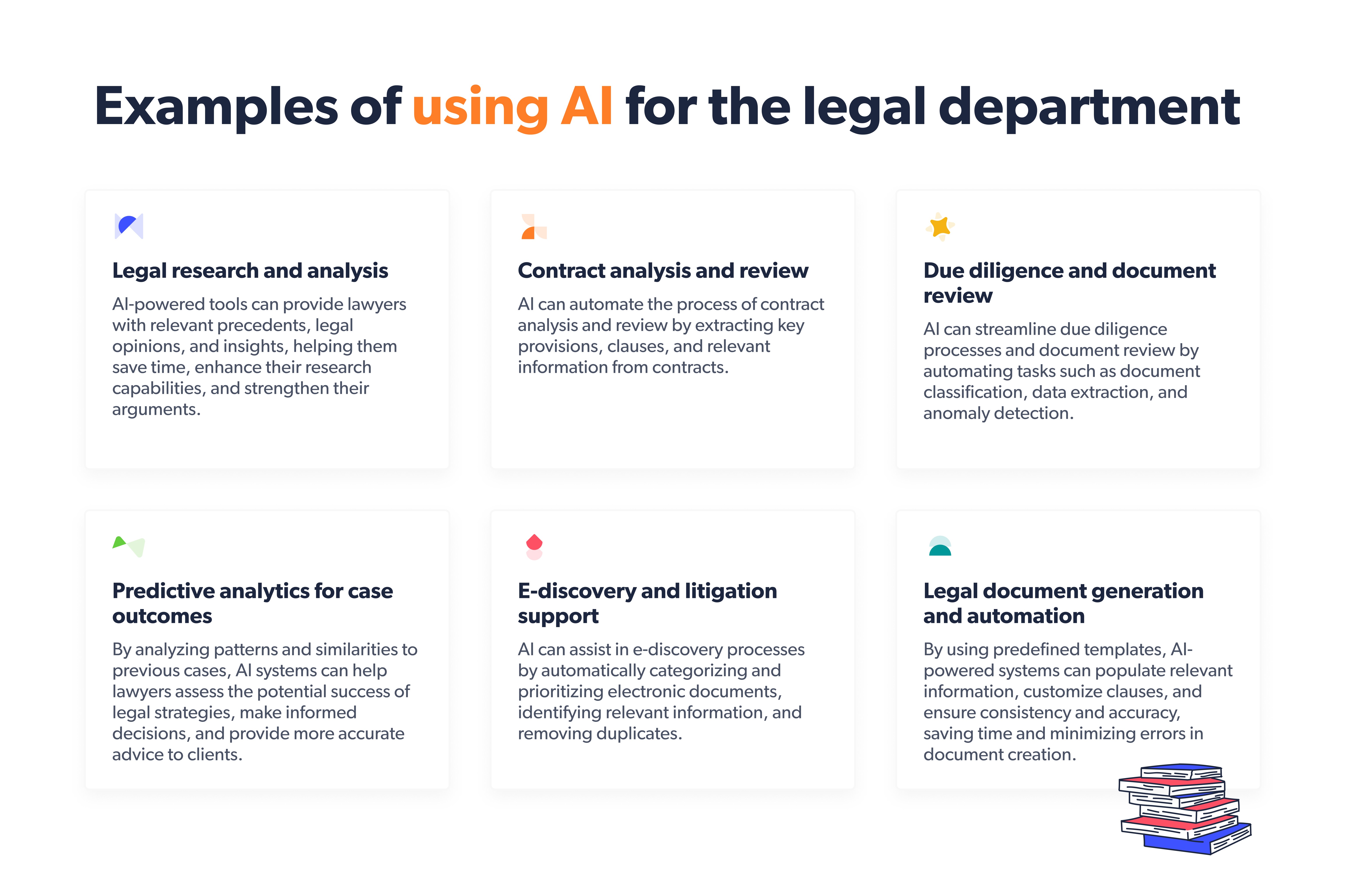Embracing the future: How AI is reshaping the tax and legal workforce
Table of contents
Is there any hype about AI and the future of work?
Companies increasingly rely on an augmented workforce (contractors, gig workers, professional service firms, ancillary organizations, and technologies such as algorithmic control and artificial intelligence) to achieve strategic goals and objectives.
Governments worldwide are also paying attention to the impact of AI on the future of work. They invest in research, policy development, and initiatives to prepare the workforce for the AI-driven future. It indicates a recognition of AI’s significance in shaping the labor market.
Thus, as technology advances at an unprecedented pace, AI is revolutionizing various industries, including tax and legal. The integration of AI can transform the way professionals in these fields operate, leading to increased efficiency, improved decision-making, and enhanced compliance. In this article, we explore the impact of AI on the future workforce in tax and legal domains, highlighting the opportunities and challenges it brings. We also tried to answer the questions related to AI and the future of work precisely:
- Is the data collected in a way that AI can use effectively?
- What are the strategic advantages of artificial intelligence in taxation?
- What are the practical applications of artificial intelligence in legal cases?
Is the data collected in a way that AI can use effectively for the future of work?
“Move too slowly and risk getting left behind. Move too quickly, and neither the staff nor the technology may be ready.” — The leader’s dilemma shared in The New York Times.
Early research suggests that generative AI tools could speed up many tasks and increase employee productivity. For example, Massachusetts Institute of Technology and Stanford researchers found that customer support staff with an AI tool that suggested responses resolved up to 14% of customer issues each hour on average.
Artificial intelligence is everywhere, and it’s probably only a few inches from our fingers at any given time (from voice assistants on our smartphones to personalized recommendations on streaming platforms and even powering advanced technologies in sectors such as healthcare, finance, and transportation). The potential for revealing artificial intelligence in the tax function is excellent.
AI can process thousands of transactions with percentage point perfection in seconds.
However, while AI can indeed process large volumes of transactions quickly, it’s important to note that the accuracy and speed of AI systems may vary because of specific use cases, the quality of data, and the complexity of the tasks involved.
How to evaluate the accuracy and speed of AI systems for the future of the workforce?
To evaluate the accuracy and speed of AI systems in processing transactions, it would be necessary to consider specific AI models or platforms, their performance metrics, and any available benchmarking or research studies in the field. Additionally, real-world implementation and performance can vary based on the specific context and deployment of the AI system. AI-supported tools can free tax practitioners to focus on value-added areas such as tax approaches.
The adoption of AI in tax and legal teams varies across different companies and industries. While it’s challenging to provide an exact number, it’s evident that an increasing number of companies are recognizing the potential benefits of AI in these domains and incorporating it into their operations.
Are there any particular examples of AI and the future of the workforce in tax departments?
The research by Kathleen M. Bakarich and Patrick E. O’Brien surveyed 90 participants who are public accounting professionals representing various firms, service lines, and positions in 2021, indicated that both Robotic Process Automation (RPA) and Machine Learning (ML) are currently not extensively utilized by public accountants or their clients. However, participants strongly believe that AI will significantly impact their daily responsibilities within the next five years. The survey also reveals that public accountants are generally receptive to these forthcoming changes.
And some companies have already started introducing automation in their work. Larger accounting and tax advisory companies, like Deloitte, PwC, KPMG, and EY, have been early adopters of AI technology in the tax sector. These firms leverage AI algorithms to automate tax return preparation, identify tax planning opportunities, and analyze large volumes of financial data for compliance. Similarly, corporations with substantial tax-related complexities, such as multinational companies, often employ AI systems to streamline tax compliance processes and improve accuracy.
What about AI and the future of the workforce in legal departments?
In the legal field, AI adoption has been observed in various areas. Some law firms and legal departments have embraced AI-powered tools for legal research, contract analysis, and document review. These tools help lawyers identify relevant case law, extract key information from contracts, and streamline the due diligence process. Additionally, AI algorithms can analyze litigation data, predict case outcomes, and assist lawyers in making informed decisions.
For example, IBM Watson, ROSS, Kira Systems, and Luminance have applied AI in the legal field to assist with legal research, document analysis, and contract review. These firms use automation to help lawyers extract relevant information from large volumes of legal documents quickly and accurately, provide lawyers with relevant case law, statutes, and legal opinions to support their legal research process, and categorize relevant information from contracts, enabling legal teams to review and analyze contracts more efficiently. In the next block of the article, we will delve in more detail into examples of the use of AI in the future of work in tax and legal. Let’s consider specific examples.
How is AI expected to influence the future of work in tax and legal?
Integrating artificial intelligence tools and technologies into the tax and legal industry allows professionals to work more efficiently and accurately. For example, one empirical paper explores interviews with leading scientists about the potential impact of artificial intelligence on research practice and culture. The survey respondents determined that one of the positive consequences of using AI is the rapid collection of information, support of influence, and interdisciplinary. See the specific use cases of AI as a future of work in tax and legal below.
Automation of routine tasks
AI technologies like NLP and ML can automate repetitive and mundane tasks in tax and legal processes. For example, AI-powered software can help automate tax return preparation, contract analysis, and legal research, allowing specialists to focus on more complex and strategic work.
Example:
According to Daren Campbell, head of tax innovation at EY Americas, tax services currently dedicate significant time to manual tasks like “copy and paste.” The EY Global Tax Technology and Transformation Survey 2020 supports this notion, revealing that tax teams typically spend 40-70% of their time on data collection and processing. In contrast, AI has the potential to perform these tasks much more quickly. Campbell believes that shortly, artificial intelligence will enable tax teams to shift their focus toward overall business strategy and the tax-related aspects of that strategy. He also envisions a time when AI will provide data-driven suggestions and recommendations to help companies achieve their strategic tax objectives.
Improved efficiency
AI can enhance the efficiency of tax and legal processes by analyzing vast amounts of data quickly and accurately. ML algorithms can gather patterns and trends in tax regulations, case laws, and legal documents, enabling professionals to make more informed decisions in less time.
Example:
KPMG, one of the Big Four accounting firms, has implemented AI technologies to streamline tax and legal operations. By leveraging AI, KPMG can analyze vast amounts of tax regulations, case laws, and legal documents more efficiently. AI algorithms can quickly identify relevant information, extract key provisions, and highlight potential risks or opportunities. This enables KPMG’s tax and legal professionals to make informed decisions and provide accurate advice to clients in a shorter timeframe.
Additionally, AI-powered tools at KPMG automate repetitive tasks such as data collection, document review, and contract analysis. By eliminating manual efforts, professionals can allocate more time to strategic tasks, such as analyzing complex tax scenarios, developing tax optimization strategies, or providing valuable insights to clients.
Overall, KPMG’s implementation of AI in tax and legal processes has enhanced efficiency by reducing the time spent on manual tasks, improving data analysis capabilities, and enabling professionals to focus on higher-value activities that require human expertise.
Legal research and document analysis
AI-powered tools can streamline legal research by analyzing large volumes of case law, statutes, and legal precedents. These tools can extract relevant information, summarize key points, and provide recommendations, significantly reducing the time and effort required for legal research.
Example:
ROSS implied the AI platform assist legal professionals in their research and document analysis tasks. The platform analyzed many legal documents, including case law, statutes, regulations, and legal opinions. The platform can quickly identify relevant legal precedents, extract key information, and provide insights to legal professionals by using AI algorithms. It significantly speeded up the research process and enabled lawyers to find relevant information more efficiently.
Support for decision making
AI can provide valuable insights to tax and legal professionals, helping them make well-informed decisions. By analyzing data and considering various factors, AI systems can provide recommendations on tax planning strategies, legal strategies, or potential risks and opportunities, augmenting the expertise of professionals.
Example:
By leveraging AI in decision-making processes, Thomson Reuters has improved decision-making efficiency, accuracy, and reliability in the tax and legal domains.
- In the tax domain, Thomson Reuters provided AI-driven tax research platforms that analyzed vast amounts of tax regulations, case laws, and rulings. The company used learning algorithms to identify relevant information, interpret complex tax rules, and provide insights to tax professionals.
- In the legal domain, Thomson Reuters tried AI-powered legal research tools that streamline decision-making processes. These tools use natural language processing and machine learning algorithms to analyze legal documents, such as case laws, statutes, and regulations. With such tools, the company could identify relevant precedents, extract key information, and provide insights to legal professionals, enabling them to make better-informed decisions and provide accurate legal advice.
Evolution of job roles
Introducing AI in tax and legal domains may lead to the evolution of job roles rather than complete displacement. Professionals may need to upskill and focus on higher-level tasks that require critical thinking, strategic planning, and complex problem-solving, while AI handles more routine and repetitive tasks.
Example:
With the implementation of AI, Deloitte has automated repetitive and manual tasks in tax and legal processes. This automation allowed tax and legal professionals of the organization to shift their focus from mundane tasks to more strategic and value-added activities. It also allowed tax and legal professionals to provide clients with more accurate and data-driven advice, contributing to better decision-making processes.
Moreover, Deloitte has recognized the importance of upskilling its workforce to adapt to the evolving landscape. The company has invested in training programs to equip its tax and legal professionals with the necessary skills to work effectively with AI technologies. This ensured that professionals could leverage AI to augment their expertise and enhance performance. Through the adoption of AI, Deloitte has transformed job roles in tax and legal, enabling professionals to focus on higher-value tasks, leverage advanced analytics, and provide more strategic insights to clients.
Upskill your tax and legal teams wisely
Don’t miss the opportunity to embrace upskilling, reskilling, and cross-skilling practices that drive success in the ever-evolving tax and legal landscape. Equip your teams with the latest knowledge, tools, and techniques to deliver exceptional results.
‘Ctrl + F’ for reaching conclusions in the interaction of AI and the future of work
The impact of AI on the future workforce in tax and legal domains is undeniable. AI technologies are transforming how professionals in these fields operate by automating routine tasks, improving efficiency, enhancing compliance, and providing valuable insights:
- The accuracy and speed of AI systems in processing transactions vary based on specific use cases, data quality, and task complexity. Evaluation should consider specific AI models, performance metrics, benchmarking, and real-world implementation.
- AI in tax departments can improve accuracy and efficiency through automated data entry and extraction, tax compliance and risk assessment, tax planning and optimization, tax research and regulations monitoring, transfer pricing analysis, and audit support.
- In legal departments, AI adoption is observed in legal research and analysis, contract and review, due diligence and document review, predictive analytics for case outcomes, e-discovery, litigation support, legal document generation, and automation.
- Companies should prioritize upskilling, reskilling, and cross-skilling practices to equip tax and legal teams with the necessary knowledge, tools, and techniques to excel in the evolving landscape shaped by AI.
Stay up to date with our newsletter
Every month, we’ll send you a curated newsletter with our updates and the latest industry news.





























 info@hrforecast.de
info@hrforecast.de
 +49 89 215384810
+49 89 215384810






